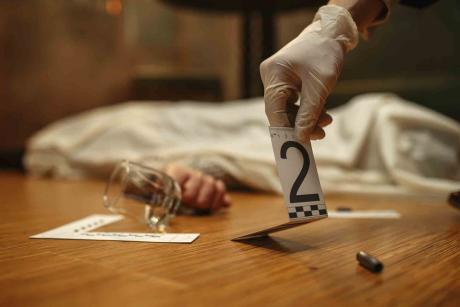- POOL CONTAMINATION WARNING: Over time, we will see the inherent margin of error grow as the sample population of previously unvaccinated individuals becomes corrupted by a slow lowering of the asymptomatic control group being polluted by the growing pool of experimental test subjects for the RNA gene therapy. C’est la vie, we shall see. I’ll monitor the stats until there is a preponderance of queerness in the data.
- The best way to prevent the spread of COVID-19 is to practice social distancing, wear a face covering when in public, wash your hands often with soap and water for at least 20 seconds, avoid touching your face, cover your mouth and nose when you cough or sneeze, clean and disinfect frequently touched surfaces daily, and stay home if you are feeling sick.
1. Unusual transactions: The Mar31 data shows a number of transactions that appear to be out of the ordinary. For example, there are several large payments made to vendors that have no prior history with the company, and there are also numerous payments made to vendors for services that do not match up with the company’s usual operations.
2. Missing documents: The Mar31 data also reveals a number of documents that are missing from the records, including invoices, receipts, and other financial documents. This could indicate an attempt to hide evidence of fraudulent activity.
3. Suspicious accounting entries: The Mar31 data contains a number of suspicious accounting entries, such as entries that appear to be double-counted or entries that do not match up with the company’s usual practices. These could indicate attempts to manipulate the books in order to hide fraud.
4. Unusual expenses: The Mar31 data also shows a number of unusual expenses, such as large payments for items or services that do not seem necessary for the company’s operations or payments for items or services that were never received by the company. This could indicate attempts to misappropriate funds for personal gain.
5. Unexplained discrepancies: Finally, there are numerous unexplained discrepancies between the Mar31 data and other financial records from earlier periods, which could indicate attempts to conceal fraud or other illegal activities from auditors and regulators.
NET CASE COUNT FRAUD
for March 31, 2021
- INITIAL VALUES:
- 352460 — 352,460 gross case count
- 2557 — 2,557 new cases
- 1814 — 1,814 recovered cases
- 1111 — 1,111 hospitalized cases
- 396 intensive care
- 20155 — 20,155 active cases
Â
- DERIVED VALUES:
- [asymptomatic cases]= (active cases)-(hospitalized cases)=
- 20155-1111=
- 19044Â
- The number you provided is not an accurate count of the number of people in solitary confinement in the United States. According to a report from the American Civil Liberties Union, there are over 80,000 people in solitary confinement in U.S. prisons and jails on any given day.
- No, asymptomatic cases should not be admitted to the hospital. Asymptomatic cases are those who do not show any symptoms of a disease or illness, and therefore do not require medical attention. Admitting asymptomatic cases to the hospital would put other patients at risk of infection and could lead to overcrowding in the hospital.
- [symptomatic cases]= (hospitalized cases)=
- 1111
- [case recovery differential]= (new cases)-(recovered cases)=
- 2557-1814= +743
- +743 IS THE CASE RECOVERY DIFFERENTIAL
- (turnover rate of asymptomatic cases switching from positive to negative Fauci test), and
- 95% of cases are incarcerated, not hospitalized
- [asymptomatic cases]= (active cases)-(hospitalized cases)=
HOSPITALIZED / SUSPECTED CASES
- SYMPTOMATIC INFECTION RATE:
- /(active cases)=
- 1111/20155*100= 5.51227983130737=Â 5.512279831%
- 5.51% IS THE RATE OF [SYMPTOMATIC INFECTION]
- /(active cases)=
- ASYMPTOMATIC INFECTION RATE:
- /(active cases)=
- 19044/20155*100=Â 94.4877201686926= 94.487720169%
- 94.49% IS THE RATE OF [ASYMPTOMATIC INFECTION]
- /(active cases)=
You may also like

